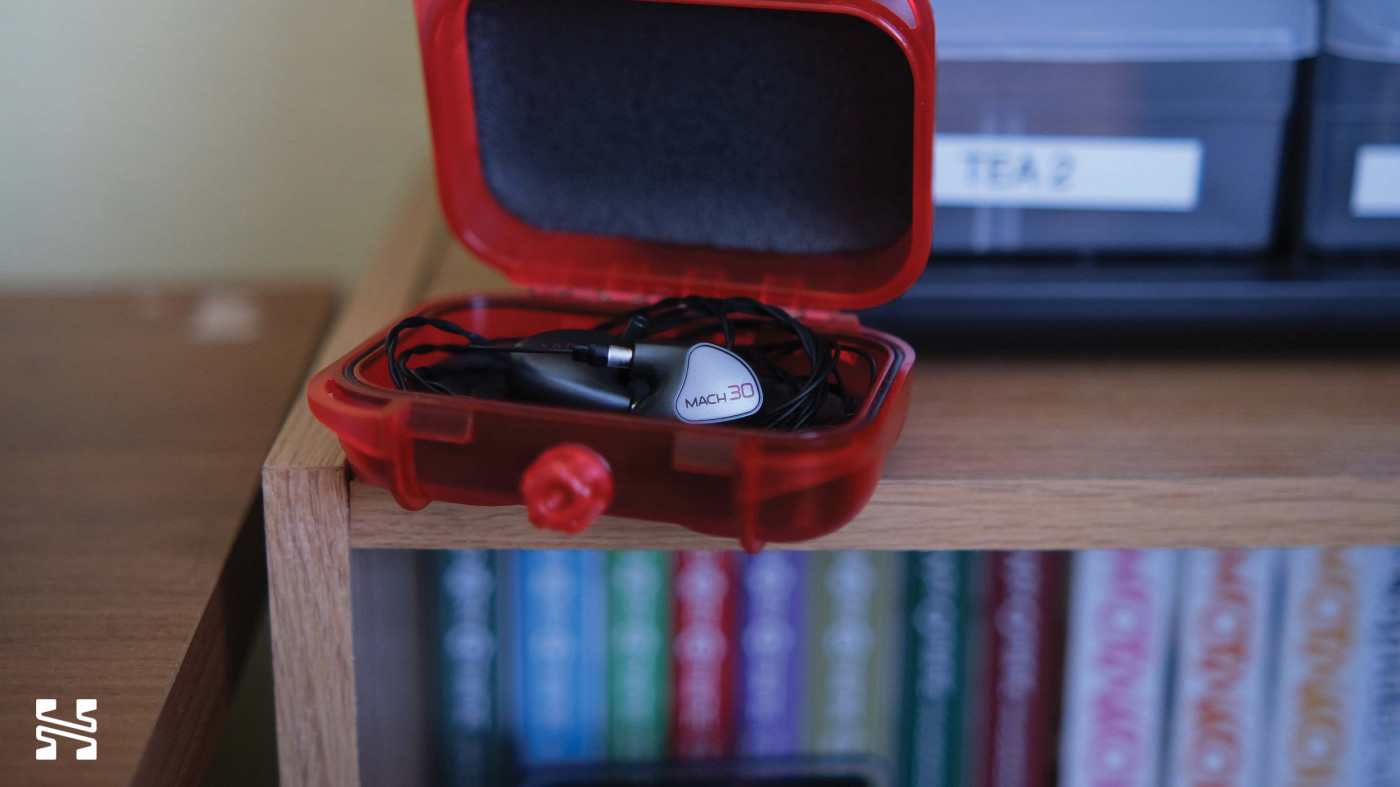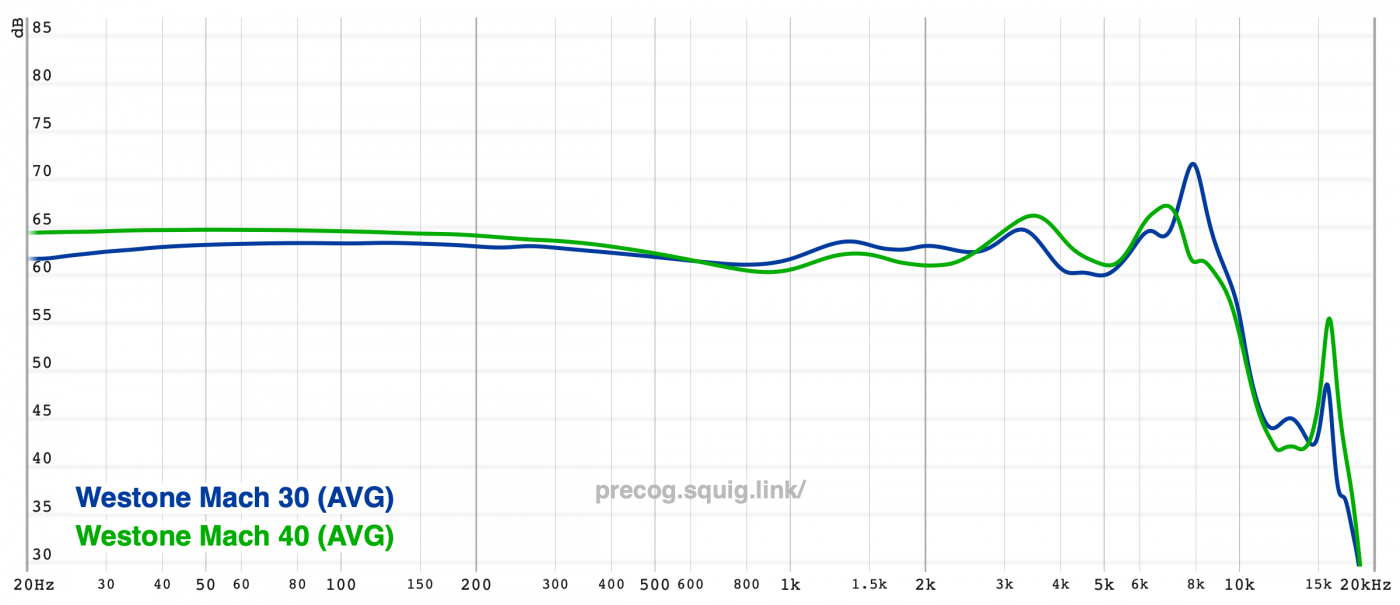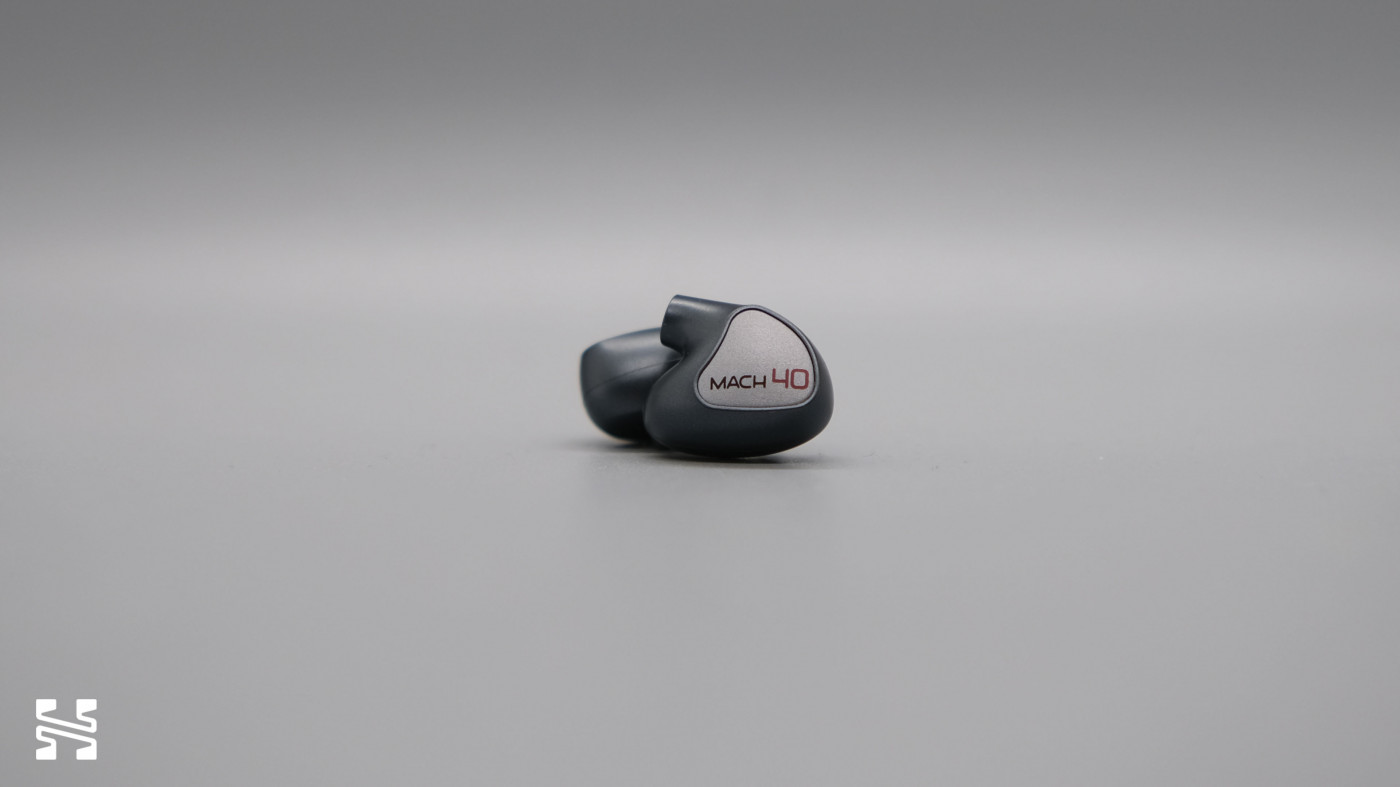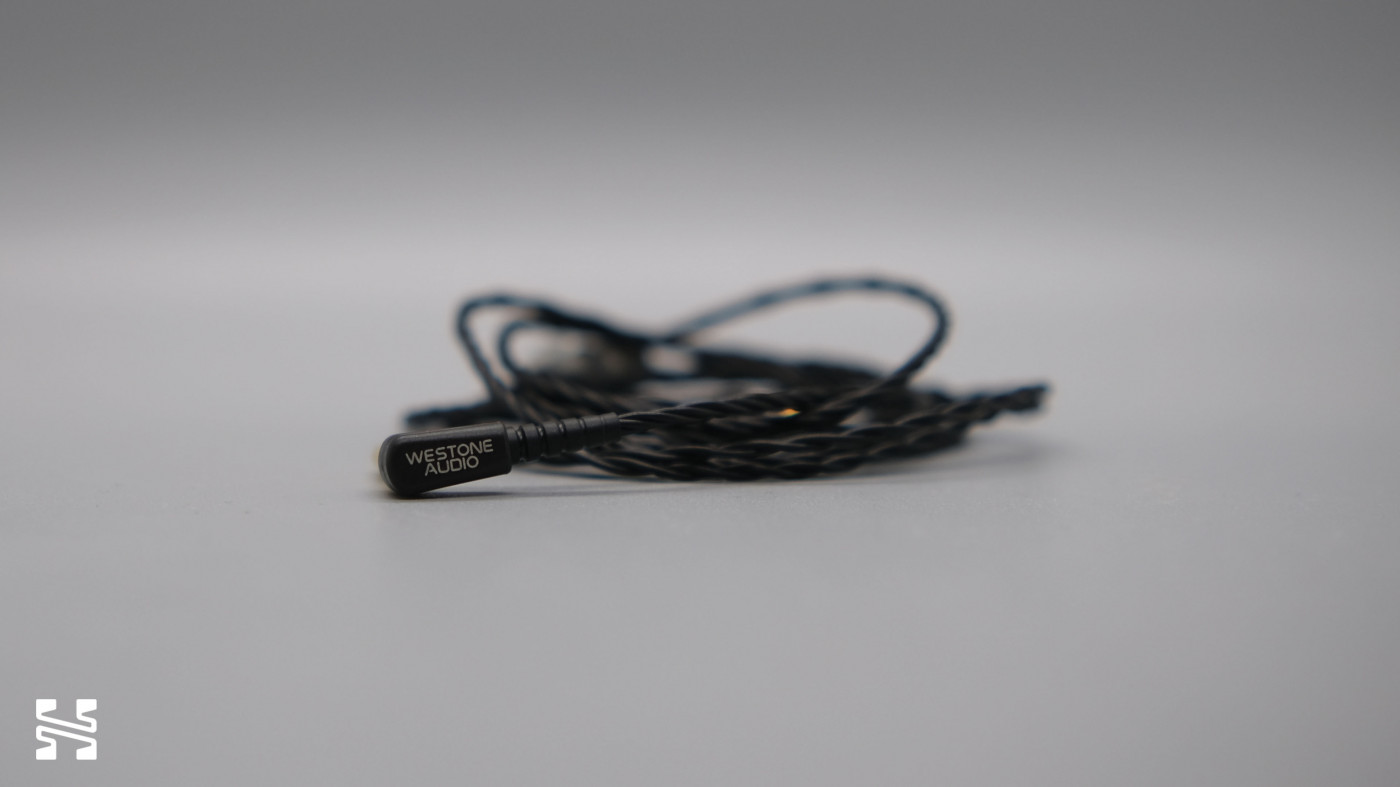Westone Mach 40 Review - Old School vs. New School

Introduction
Westone is an old guard of the IEM world; while the brand doesn't enjoy as much recognition from the new generation of audiophiles, it has an established standing on the pro audio scene. Now, I had the opportunity to demo some of Westone's IEMs last year at CanJam SoCal and, frankly, I found myself less than impressed. Of course, show conditions being what they are, I didn't really feel it was fair to comment too harshly on them. But the advent of a new year gives not only the opportunity to hear some of the brand's latest models, but to also hear them from the comfort of my own home under ideal listening conditions. So how does the Mach 40 (4BA, $599) - the focus of this review - sound, and how does its baby brother the Mach 30 (3BA, $499) compare?
Units were provided courtesy of a review tour organized by Westone and Zachik on Head-Fi. The units will be returned at the end of the review period. As always, what follows are my honest thoughts and opinions to the best of my ability.
Source and Drivability
All critical listening was done off of my iBasso DX300 and iPhone 13 Mini with lossless files. The stock cables and stock silicone tips were used. The Mach 40 and Mach 30 are both fairly easy to drive - especially the Mach 30. I had no trouble getting either to my usual listening volumes of ~70dB, sitting at around 30% volume on my iPhone 13 Mini with the Mach 40. If you'd like to learn more about my listening methodology and test tracks, then I would encourage you to check out this page.
In-the-Box
The follow accessories are included with the Mach 40:
- Carry baggy
- 5x pairs of both silicone and foam tips
- Pelican carrying case
- IPX cable w/ cable ties

My favorite part about the accessories is definitely the included Pelican case and its custom foam inserts. It feels high-quality and robust. However, I personally find the build quality of the other accessories - and the Mach 40 itself - to be more middling. This sentiment mainly stems from the plastic being used (it's the cheap, weightless kind) on both the cable and the Mach 40. Now, there is a common misconception that weight correlates with quality. But for lack of a better word, the Mach 40 and its cable just feel...cheap. For example, the ridge where the two parts of the shell meet has not been smoothed over, and the hardware being employed on the cable is purely plastic whereas I am usually accustomed to seeing at least some metal hardware.
The Mach 40 is at least quite usable. It has a narrow stem that uses longer ear tips for a deeper insertion depth. Here, the lightness of the ear pieces and the cable are a boon to moveability and comfort, although this will vary pending individual ear anatomy. Personally, I found the Mach 40 to be quite comfortable. It's the same story for the Mach 30 which basically shares the exact same design at a glance.
Sound Analysis
The frequency response below was taken off of a clone IEC-711 coupler. There is a resonance peak at 8kHz. As such, measurements after this point should not be considered entirely accurate. If you would like to compare the Mach 40 to other IEMs I have measured, please see here.

Earlier, I expressed my reservations about commenting on the models I heard at CanJam SoCal. Well...now I'm afforded the luxury of commenting with more certainty: the new models are not good. Above all else, the Mach 40 is a prime example of the stereotypes associated with the BA topology. I struggle to think of the last time I have heard BA bass this bad; the Mach 40 has no slam, no texture, no decay, and definitely a lot of bass fart - basically the textbook for everything wrong with BA bass.
Of course, I would hypothesize that these qualities (or lack thereof) are partially a product of the leakage tolerances that BAs typically exhibit compared to DDs. BAs tend to drop in output much more quickly with minor breaks in seal. But even frequencies at ~30Hz on the Mach 40 barely present a tickle which is surprising in a bad way. This drop in SPL in the deepest frequencies also exacerbates perception of the mid-bass frequencies where the Mach 40 is fairly bloated.
Moving forward, the midrange of the Mach 40 demonstrates a fundamental lack of consideration for what the pinna compensation should ideally be. For readers who might not be familiar with this term, the body has natural resonance peaks at certain points; IEMs bypass the pinna part of the ear, so somewhere from 1-3kHz should usually be boosted accordingly. Moreover, there's also the canal resonance, does need to be taken into consideration. In other words, an IEM should not measure flat on a raw graph, and should taken various ear-related 'features' into consideration.
Sure, there is some presence on the Mach 40 in the 1-3khz regions, but it's really pushing it. Vocals sound pushed back and quite muted in the harmonics; what's worse, the parts of the pinna compensation that are there are everywhere. Vocals simply sound...uncanny. Wrong. Any similar adjective in the book, really. It's the same story with the timbre of any instruments in the midrange. Sure, they're thicker leaning and non-peaky. But they don't sound any metric of correct either.
Of course, this uncanniness is exacerbated by the Mach 40's serious lack of treble extension. An IEM can actually get away with a lot in terms of deviating from "conventional" tuning provided it has good treble extension; examples such as the CFA Andromeda, 64A U12t, and some of Vision Ear's IEMs come to mind. But a lot of shimmer and zing that I'm used to hearing on my other sets just disappears because the Mach 40's upper-treble is so withdrawn. Is the Mach 40's treble fatigue free? Smooth? Possibly, but I'll be the first to tell you that you don't need to pay $500 for that. There are $30 sets with more extension and smoother treble than the Mach 40 exhibits.
And technicalities? Honestly, there's little point in talking about them. The decided lack of treble extension in tandem with the odd upper-midrange kills any sense of trailing minutia, much less surface-level detail. That in mind, there is a general sense of transients sounding quite blunted in attack. The Mach 40 also has poor dynamic range and sounds heavily dampened. It really is a case, at least to my ears, where the tuning more or less dictates the perceived technical merits of the IEM.
Comparisons

Surprisingly the Mach 30 sounds slightly better than the Mach 40. It's a little less bloated in the bass and a little more energetic up top which makes it a more exciting (and fatiguing) listen. Outside of that and the Mach 30 actually being $100 cheaper, I'd be splitting hairs for which is worse.
A frequency response comparison between the Mach 30 and the Mach 40:

The comparison gets even worse when you compare the Mach 40 to some of the current crop of budget front-runners:

Yes, these are $20-30 IEMs...and yes, they sound better if you ask me. There are two noticeable discrepancies between these IEMs versus the Mach 40, and they lie in how the Chu and CRA+ approach the upper-midrange and treble frequencies. The Chu and the CRA+ sound much more vivid, energetic compared to the Mach 40. Even the Chu, which I lambasted in the past for its poor bass impact, handily out delivers the Mach 40 for a sense of slam.
The Bottom Line
The Mach 40 viscerally illustrates my qualms with many of the IEMs I've heard that are more oriented toward the pro audio scene. Generally, I get the impression that IEMs like the Mach 40 are stuck five years in the past in terms of sound quality. And even if this was the type of sound one wanted for performing, again, one does not need to spend nearly this much to get this sound. In my opinion only, the Mach 40 (and Mach 30) needs a major retune and is not commensurate with its asking price.


